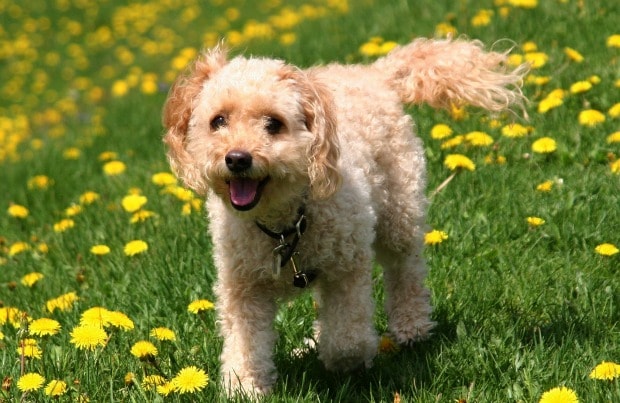The Cockapoo—which is a cross between the Cocker Spaniel and Poodle—is people-oriented, intelligent and easy to train. The breed fits in well with almost any owner, from large families to the elderly, and have grown rapidly in popularity in recent years.
Here’s a bit more about the breed, according to the American Cockapoo Club.
Physical Characteristics
Cockapoos can come in three sizes — toy (generally under 12 pounds), mini (around 12 – 20 pounds) and standard (can be over 20 pounds).
COLOR(S)
Typical Cockapoo colors include black, white, buff, cream, apricot, red and chocolate, as well as any of these colors along with white markings. They can also be parti, phantom, sable, tri-color, merle or roan.
COAT
Cockapoos are generally non-shedding dogs that require daily brushings and the occasional hair trim. They are good for people with allergies since they produce only small amounts of dander and hair. Coats tend to be dense, and may be either wavy or curly.
Personality and Temperament
ACTIVITY LEVEL
Moderate
POSITIVES
Cockapoos are easy to train and tend to be very smart. They are eager to please their owners and usually do well with both children and other pets.
THINGS TO CONSIDER
As a hybrid breed, it can be hard to exactly predict looks, size and temperament, as is typically easier to do with purebreds.
Care
IDEAL LIVING SITUATION
Cockapoos can adapt well to both apartments and large homes, depending on their size.
SPECIAL REQUIREMENTS
Requires daily exercise and minimal grooming.
Health
While not all Cockapoos will get these diseases, a few to be on the lookout for include cataracts, patellar luxation (or slipped stifles, a common problem with smaller dogs), hip dysplasia, allergies, liver disease and ear infections.
History and Background
The Cockapoo is one of the older hybrids, dating back to around the 1960s. While the original breeding may have been an accident, the result was a dog that was intelligent, low-shedding and easygoing. Cockapoos have grown in popularity over the years, with many clubs forming to help establish and create consistency for the breed.
By: Chewy Editorial
Share:









